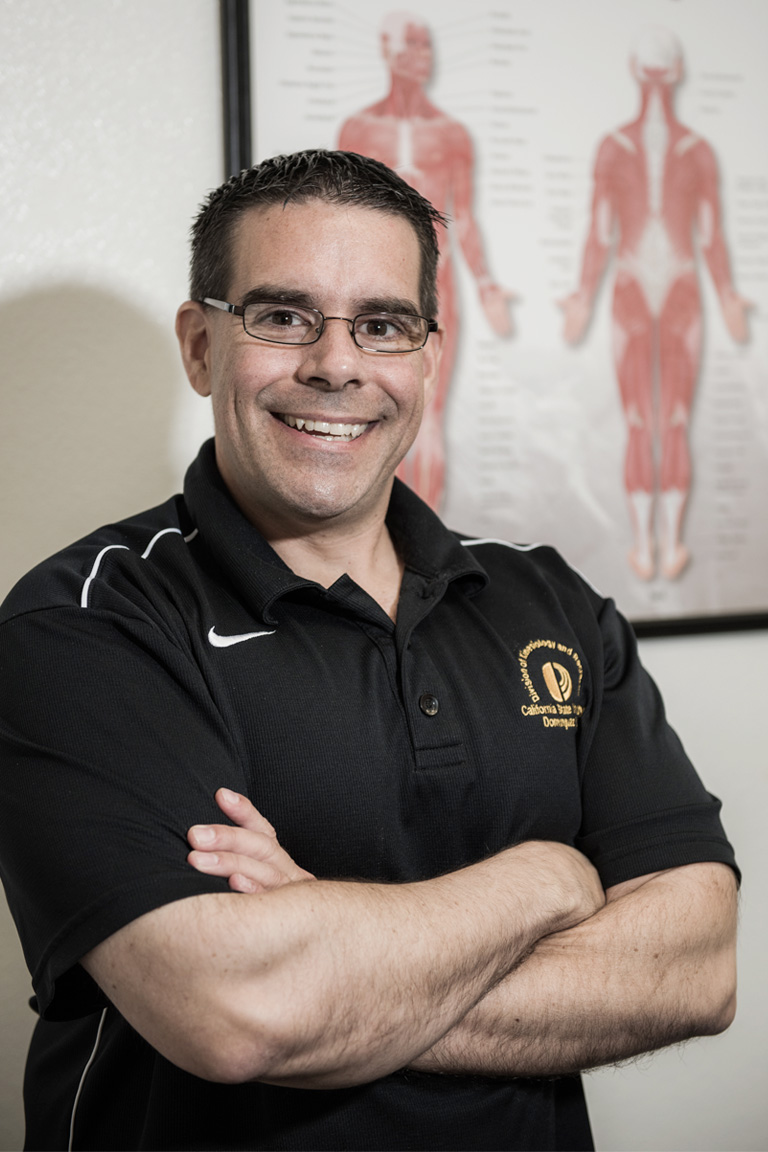 If all goes well, Assistant Professor of Kinesiology Scott Cheatham’s research could open doors for new methods of examining people who suffer from fibromyalgia and myofascial pain syndrome–two chronic conditions that cause widespread pain in the muscles and tissues of the body–and related issues such as fatigue.
If all goes well, Assistant Professor of Kinesiology Scott Cheatham’s research could open doors for new methods of examining people who suffer from fibromyalgia and myofascial pain syndrome–two chronic conditions that cause widespread pain in the muscles and tissues of the body–and related issues such as fatigue.
For over a year, Cheatham, who serves as director of Cal State Dominguez Hills’ Pre-Physical Therapy Program, studied more than 90 individuals with fibromyalgia and myofascial pain.
Normally, a doctor will apply a self-prescribed amount of pressure to a body region using touch, then document the patient’s reaction to the graded pressure. With Cheatham’s new scale, doctors would still use touch to examine a patient, but instead would rank the patient’s level of discomfort ranging from 0 to 4, which is displayed on the scale. This enables doctors to quantify the level of the discomfort and use it as a means to retest the patient in future visits.
“For the study, we utilized a computerized thumb sensor to measure the amount of pressure applied, which helped the researcher gauge their pressure in real time,” Cheatham explains. “This was the first time this technology had been used with these patients, which helped to further validate the scale.”
A researcher, practitioner, and expert consultant for various organizations and government agencies, Cheatham believes his new method will enhance the standard examination process used to diagnose fibromyalgia, which was developed by The American College of Rheumatology in the 1990s. His approach would allow practitioners the ability to more accurately rank a patient’s pain level, which will help guide examination and treatment.
“No tool can replace the touch of a hand,” says Cheatham (’97, B.A. physical education), who after graduating from CSUDH went on to earn two doctorates, a D.P.T. and a Ph.D. in physical therapy. “However, if we can objectify the examination process with a scale, then we may be more accurate with our diagnosis. This scale may help standardize how patients are examined, which may make us better doctors and educators.”
When a patient is in a lot of pain it’s a challenge to examine them due to their low tolerance and sensitivity to touch,” he adds. “The scale enables doctors to step out of the box and measure their examination findings in a different way.”
Cheatham’s motivation for conducting the study was his mother, who has suffered from fibromyalgia for over 20 years.
“People with these chronic conditions have limited function due to the wide-spread pain that they suffer from,” says Cheatham, who added that in some patients the extreme pain fibromyalgia causes can lead to severe functional deficits. “While growing up, my mother was an enthusiastic teacher and educator. During her 40s, she began to suffer with muscle pain and fatigue that eventually led to the diagnosis of fibromyalgia. So I watched her go from being this vibrant educator to a state where she can’t really do much because of her pain.”
To conduct his study, Cheatham reached out to the CSUDH campus community and fibromyalgia community groups in Southern California to find participants.
“I want to help find a cure for these chronic conditions and also help educate people. This study wouldn’t have occurred without all the wonderful study participants. I am grateful for their willingness to help,” Cheatham says. “There is still a lot we don’t know about fibromyalgia, but I think we’re one step closer with the Pressure Pain Threshold Scale, because now there is something that’s valid and useful for future studies.”
This story first appeared in the Summer 2016 issue of the university magazine, Dominguez Today.